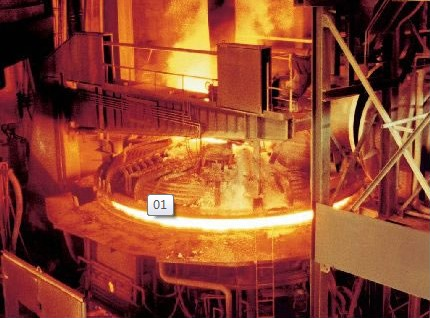CIMM accompanies these process improvements actively. The refractory lining concepts are continuously improved in order to meet those challenges; added by innovative machines and gas purging systems.
With these solutions for EAF- steel production CIMM proves not only refractory cost optimization but remarkable technological added values too.
In EAFs with a need of high-power input and therefore with a long-arc melting procedure, water cooling panels are a common standard in the upper furnace sections. Lower side wall sections in state-of-the-art EAFs are lined with Magnesia-Carbon bricks of highest quality. The combination of raw materials and a specific bonding system lead to the aimed highest thermal flexibility, combined with lowest porosity and optimized slag resistance.

An electric arc furnace used for steelmaking consists of a refractory-lined vessel, usually water-cooled in larger sizes, covered with a retractable roof, and through which one or more graphite electrodes enter the furnace. The furnace is primarily split into three sections:
the shell, which consists of the sidewalls and lower steel bowl;
the hearth, which consists of the refractory that lines the lower bowl;
the roof, which may be refractory-lined or water-cooled, and can be shaped as a section of a sphere, or as a frustum (conical section). The roof also supports the refractory delta in its centre, through which one or more graphite electrodes enter.
the shell, which consists of the sidewalls and lower steel bowl;
the hearth, which consists of the refractory that lines the lower bowl;
the roof, which may be refractory-lined or water-cooled, and can be shaped as a section of a sphere, or as a frustum (conical section). The roof also supports the refractory delta in its centre, through which one or more graphite electrodes enter.









